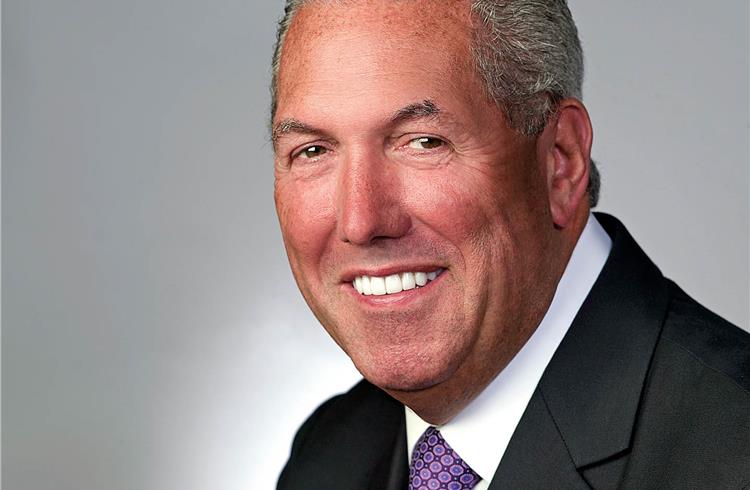'We are going to see more changes in the next 15 years in the auto industry than we've seen in the last fifty.'
Jim Tobin, Chief Marketing Officer of Magna International, on challenges to growth, new opportunities and preparing for new business solutions. An interview by Sumantra B Barooah.
Jim Tobin, Chief Marketing Officer of Magna International, on challenges to growth, new opportunities and preparing for new business solutions. An interview by Sumantra B Barooah.
Does the challenge of increasing cost pressure get magnified for Magna, as it supplies clusters of parts to OEMs?
We have no problem focusing on cost. We don’t want to talk about price. There’s a difference there. We want to focus on cost. Nissan has a term — TDC (Total Delivered Cost). So, we work with our customers on the cost side, and one area that customers are bringing us in much earlier is in product development.
One differentiator that Magna has, which I feel is a differentiator with others, is our depth in engineering. We have product engineering and manufacturing engineering. As we are way up front in product engineering, we also have the ability to make sure it’s affordable from a manufacturing perspective.
So, we have got concurrent product to process going on because many times in our industry a customer will come out and say, “Here’s my product, please make it.” It’s so expensive because we had no input. So, now we are getting up to the advanced engineering, our manufacturing process and materials to make sure we come out with the best solution. When customers get to job one, everybody has done the best they can to get the best total cost into the product. And we are seeing more and more of that.
If the customer comes to us with the big hammer and just wants price reductions, it doesn’t work. You saw that in North America, it drove many companies into bankruptcy a few years ago.
For the constant volume, the variants are increasing. How does a system supplier like you approach this challenge?Buying planning, from a production/ volume perspective, is a critical piece of our planning process. We are more cautious than we are optimistic. But contractually, we do have to meet our customers’ volumes. But we can do that in many different ways. And then, in some areas of the world, like India, the production volumes haven’t materialised the way they were anticipated.
Now, what we are doing in many areas of the world is that we can put in a process that’s flexible from a volume perspective. So, we can start with an initial volume, and we have the geometry stations that you need to set a geometry, say in a body shop, but then you can for a volume of say, 50,000 units, but then as you can look out into the consumer market you can expand that capacity very easily.
If you look at North America, most plants run at 100 percent capacity. The problems are not necessarily us. It’s some supplier down from us. So, our supplier management is very important.
If you go to China right now, the Chinese OEMs are starting to increase their production, which is good because their average capacity utilisation was only 35 percent if you look at the past few years. In comparison, the Japanese, Western and Korean manufacturers were running at almost 100 percent capacity. So, at buying planning we have a lot of rigorous discussions with our customers up front.
What is the capacity utilisation in China now?
Across the multinational joint ventures, it is between 95 and 105 (percent). The Chinese OEMs are still struggling. At best, I would speculate, it’s probably 60-65 percent. So, I heard when there’s 30 million units of production in China there will be 38 million units of capacity in China. There’s going to be some consolidation, we think, somewhere down the road.
With the passenger vehicle consumer shifting from owning to sharing cars, how is Magna preparing for new mobility solutions?
We continue to monitor the mobility side. We continue to watch consumers and the shared driving model.
What are your new innovative solutions for them?
There are many things we are working on. We do believe that shared mobility could get the consumer one mile he has get to get from his/her house to the shared mobility, and then at the end he/she needs to go one to two miles in the city to where he’s/she's got to go.
So, there’s some mobility technologies we are looking at in that area. But we don’t see shared driving as a big impact to us right now. As regards autonomous driving, there are many different kind of technologies that we are working on, that we have in-house or partly outside.
With what’s going on, we are going to see more changes in the next 15 years in the auto industry that what we have seen in the last 50 years. But regulatory and legislative will play a big part of these
new technologies coming into play.
Would the way manufacturing is done also change?
We could. We are looking at those things now.
This feature was first published in Autocar Professional's december 15-2016 anniversary issue
RELATED ARTICLES
Setrans Mobility Booster Charging top-up 25% EV range in 15 minutes
Two enterprising tech-savvy entrepreneurs Rana Roshan Singh and Vivek Ummat of Noida, Uttar Pradesh-based start-up Setra...
'Our products are proudly 100% designed and made in India'
Creatara Mobility, a New Delhi based electric two-wheeler startup, claims to have tackled various challenges in making i...
'EVs have been around for a much smaller time than ICE, so best practices are still evolving'
EV OEMs and start-ups are under pressure to reduce production costs and bring them close to ICE counterparts. Vaibhav Ku...





 16 Feb 2017
16 Feb 2017
 5264 Views
5264 Views





 Autocar Pro News Desk
Autocar Pro News Desk




